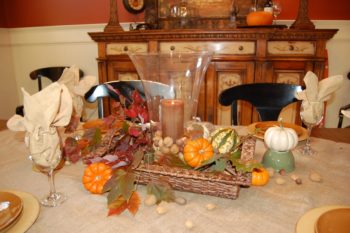What is Aligot?
Mashed potatoes with dairy cream, garlic and Laguiole, a cheese that is similar to Cantal cheese and is essentially produced with milk from cows of Aubrac, an area located in the Aveyron department in the south of France.
Laguiole cheese can be eaten with a slice of bread like any other cheese, but it is also used in the preparation of the Aligot, the regional dish of Aubrac and one of the flagship specialties of Aveyron.
An amazing but very seductive mixture. Mashed potatoes, of course, but not any mashed potatoes!
Ingredients
1 kilo potatoes (preferably old!)
150 grams butter
200 grams dairy cream
350 grams Tome of Laguiole (you can substitute mild Cantal cheese that has a taste close enough as it is not always easy to find the true cheese of Aubrac in store)
Garlic (the amount varies with individual tastes)
Salt and pepper
Method
Cook the potatoes and mash them.
Add butter and dairy cream to the hot mash.
Work the mash with a wooden spatula.
Stir until smooth.
Add grated cheese.
Add crushed garlic to suit.
Salt and pepper.
Put this mash on high heat.
Important: Stir constantly in one direction while slightly raising the mash.
The Aligot is ready when the mixture is very elastic, but be careful because the thread will break if it is kept too long on the heat.
Bon appetit!
The origin of the Aligot of Aubrac starts with a legend that dates back to 590AD
Once upon a time, there was a king called Eulalius who reigned throughout the Auvergne, a vast region of ancient dormant volcanoes in the centre of France.
One day Eulalius had a violent altercation with his irascible wife Trétédia.
Unable to settle their dispute, the husband appealed to the bishops of St-Flour, Rodez and Mende, to mediate.
The three clergymen agreed to meet on the high plateaus of Aubrac, the place where their dioceses came together.
The talks dragged on, the bishops could not find a solution, time passed, lunch time arrived and the fresh air of the mountains was giving them an appetite!
Each bishop had only brought with him a light snack thinking that the discussions would be short, alas!
The bishop of St-Flour had brought potatoes, the bishop of Rodez some fresh Tome cheese, milk and butter, and finally the Bishop of Mende had brought salt, a precious spice then and a product recently imported from distant lands: garlic!
But what to do with the ingredients?
They asked one of the cooks, Raginwald, to improvise a dish, “something edible” as they said, with all the ingredients.
Our man then began to work, and lacking inspiration, combined all ingredients in a large pot and served the mashed potatoes mixed with garlic and cheese to the three bishops.
And the three men invoking their patron saints (don’t forget that we are in France!)
“By St-Flour” said the first bishop, “it is not so bad!”
“By St-Hilaire” said the second, “with a touch of garlic, it is even famous!”
“By St-Felix” said the third, “it is rather good!”
The three bishops ate and ate some more, and soon there was just a small bite of this mashed potatoes-cheese-garlic left at the bottom of the pot…
And so our bishops began to bicker over who would keep the left-overs.
“I’ll take this bite to inspire my cook on a day without meat!” said the first bishop.
“Excuse me” said the second, “this unusual mash will allow my monks to sell the large quantity of cheese that they produce.”
“Sorry” said the third bishop, “I think of my pilgrims, and such mash would put them on their feet again!”
Each one a spoon in hand, they tried to divide the remaining small portion, but the more they cut it the stringier it became, and the stringier it became the more it stuck to the bottom of the pot!
This was a sign!
The three bishops eventually saw sense, and decided that the mash was to stay where it had been invented on the high plateaus of Aubrac.
But a “newborn” had to have a name. Because of the garlic that went into its preparation and because of its stringing quality, they named it Ailligot, an amalgam of the words ail for garlic and ligoter meaning to bind, a name that evolved very little since then.
The legend has been passed down through the centuries.
What is the truth? Nobody really knows.
What matters is that the Croix des Trois Evêques (Cross of the Three Bishops) was installed in 1238 by the monks of the Dômerie d’Aubrac Abbey to commemorate the council of the three Bishops.
It lies 5km from the village of Aubrac on the Puy de Guidette (D15 to Laguiole), the junction of the current départements of Lozère, Aveyron and Cantal.
Sadly the original cross that weighed 300kg was stolen in 1990. The present cross is a copy.
Read more:





